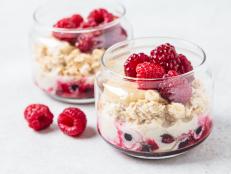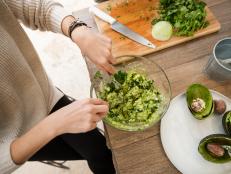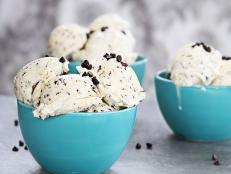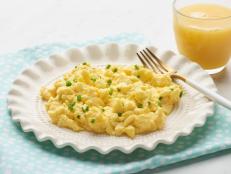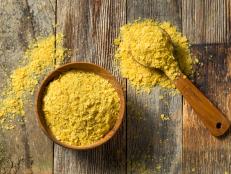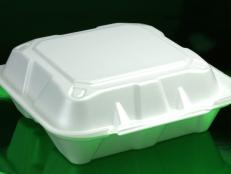How to Make Pancakes Without Baking Powder
There are a couple super easy swaps.
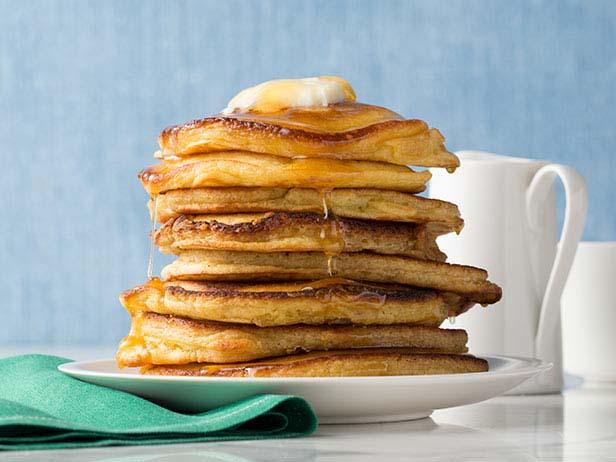
Tara Donne, Food Network: 2012, Television Food Network, G.P.
By Heath Goldman for Food Network Kitchen
Take a moment to think about the best pancakes you’ve ever had. We’re guessing “light” and “fluffy” are two adjectives that come to mind. These morning-glory qualities in pancakes are quite often caused by baking powder or a combination of baking powder and baking soda.
But what happens if you’re all out of baking powder? Have no fear, you don’t have to run to the supermarket. It’s quite possible to make pancakes without baking powder. You can make your own three-item swap using ingredients you could already have on hand.
The easiest swap for every 1 teaspoon of baking powder in your pancake mix is a blend of 1/2 teaspoon of cream of tartar, 1/4 teaspoon of baking soda and 1/4 teaspoon of cornstarch. To understand why, let’s dive into the difference between baking soda and baking powder.
Baking soda is an alkaline leavener. When it’s combined with an acidic ingredient, such as buttermilk, yogurt or molasses, it produces carbon dioxide gas bubbles that cause batter to rise. Because it reacts immediately, it should always be mixed into batter right before cooking. Baking soda also causes baked goods to turn that glorious golden brown.
Baking powder is a leavener containing a combination of baking soda, a powdered acid (such a cream of tartar) and a moisture-absorber (such as cornstarch). Because it already contains acid, it starts producing carbon dioxide as soon as it's mixed into any sort of liquid (regardless of whether that liquid contains acid like buttermilk). The most-common type of baking powder is double-acting, which releases some bubbles when it becomes wet, then the rest when exposed to heat. Double-acting baking powder causes major lift in batter, creating cloud-like pancakes.
Circling back to our baking powder swap, you’ll notice that the ingredients we suggested — cream of tartar plus baking soda plus cornstarch — are the ingredients that compose baking powder. If you don’t have cream of tartar in the cupboard, you can substitute 1/2 teaspoon of another acid like lemon juice or distilled white vinegar.
The only difference between your DIY version of baking powder and the store-bought stuff is that yours will not be double acting. Therefore, when you mix together pancakes they’ll immediately become bubbly and you’ll have to cook the batter quickly – otherwise the carbon dioxide will escape and you’ll be left with flat flapjacks.
In case you have neither baking powder nor baking soda, we wanted to find a second way to whip up fluffy pancakes without either chemical leavener. To do so, we reverse-engineered the fluffiest pancakes we know, aptly named Fluffy Japanese Pancakes. In addition to baking powder, they’re leavened with egg whites that are whipped until they’re stiff. If you think about it, leavening with stiff egg whites makes a lot of sense: They have tons of air bubbles trapped inside.
To use egg whites as a leavener, beat three egg whites until stiff peaks form and then gently fold into your pancake mixture, taking care not to overmix. Just make sure to use the batter immediately – using two skillets if necessary to cook pancakes simultaneously. Trust us, no one will be mad that their pancakes are ready quickly.
Related Stories:























